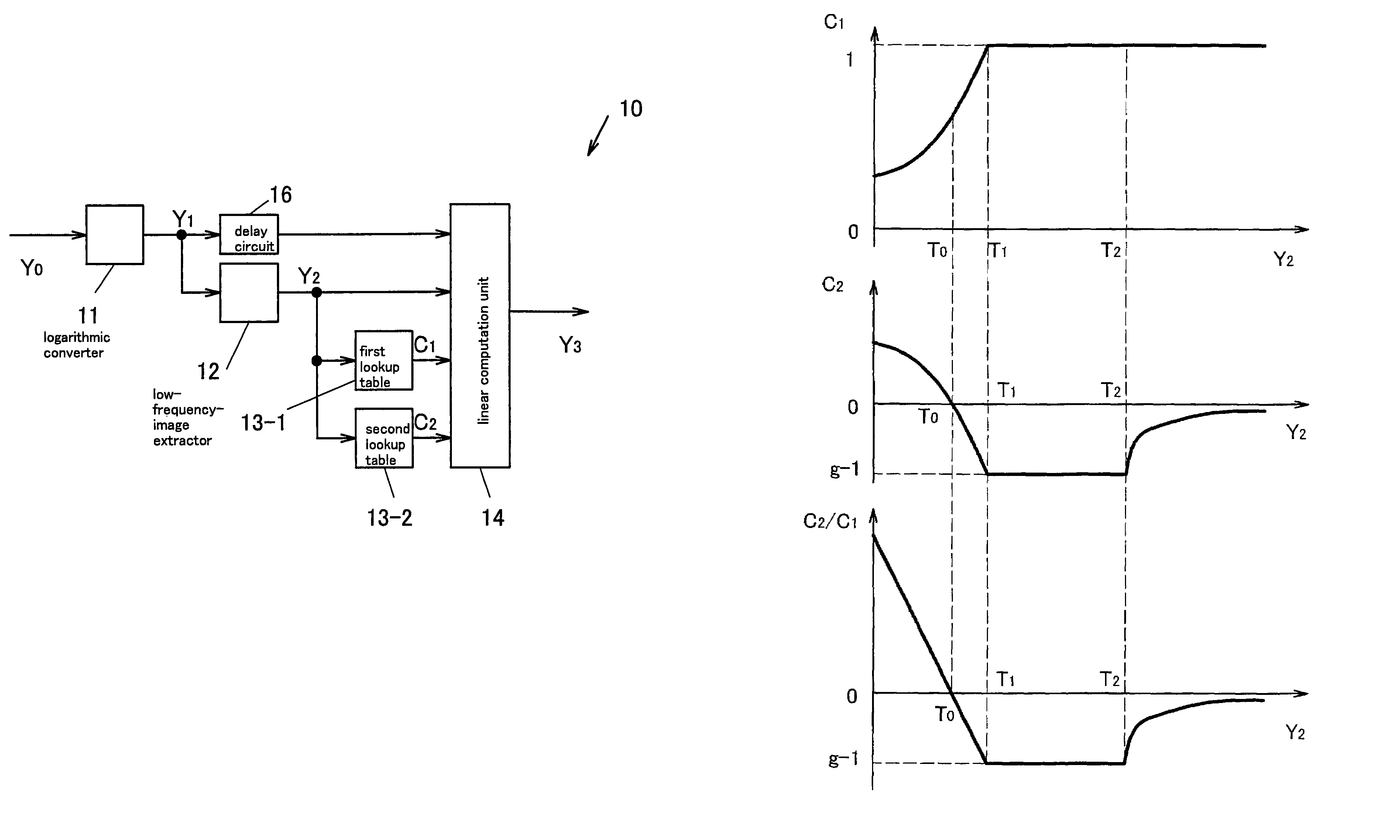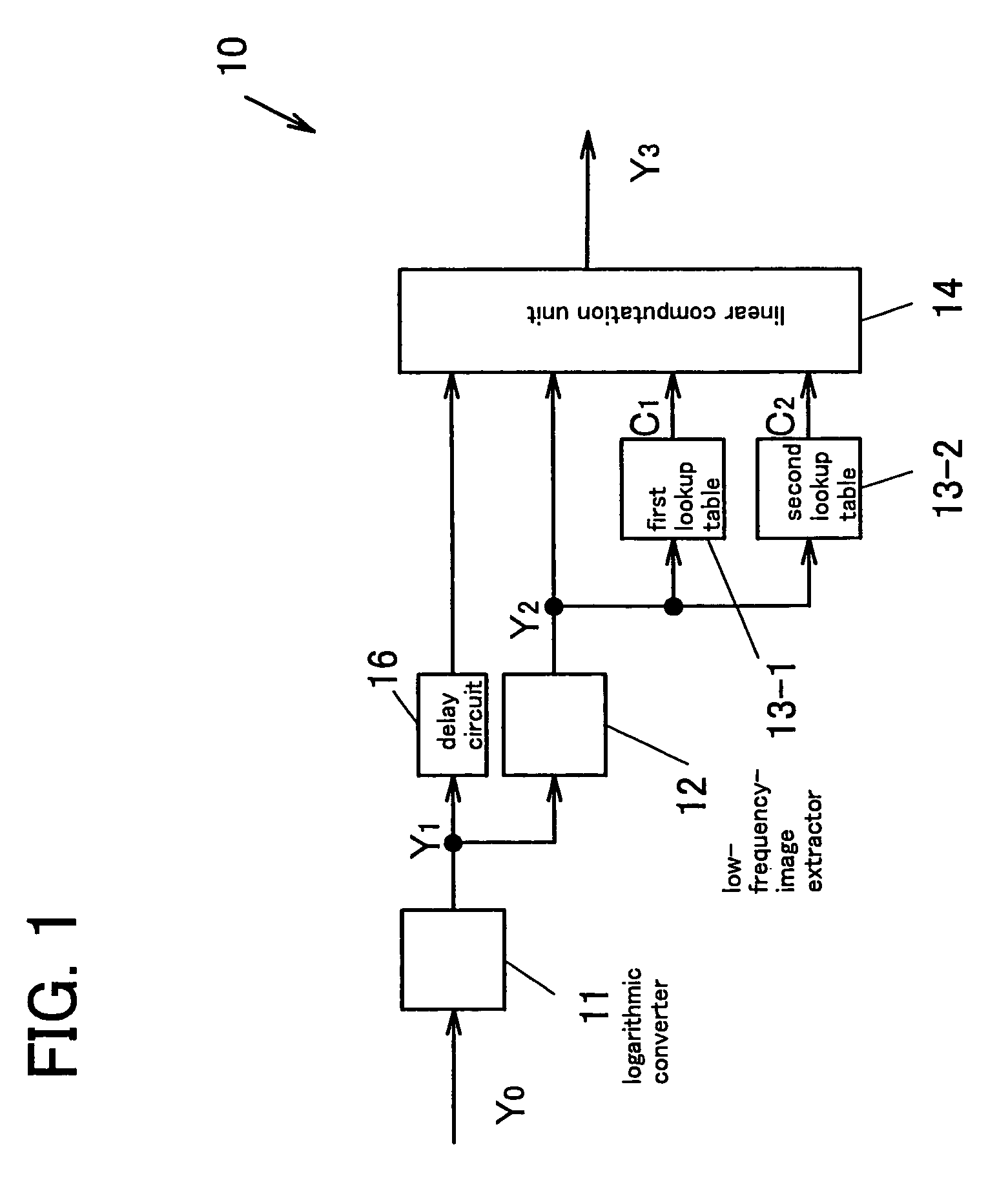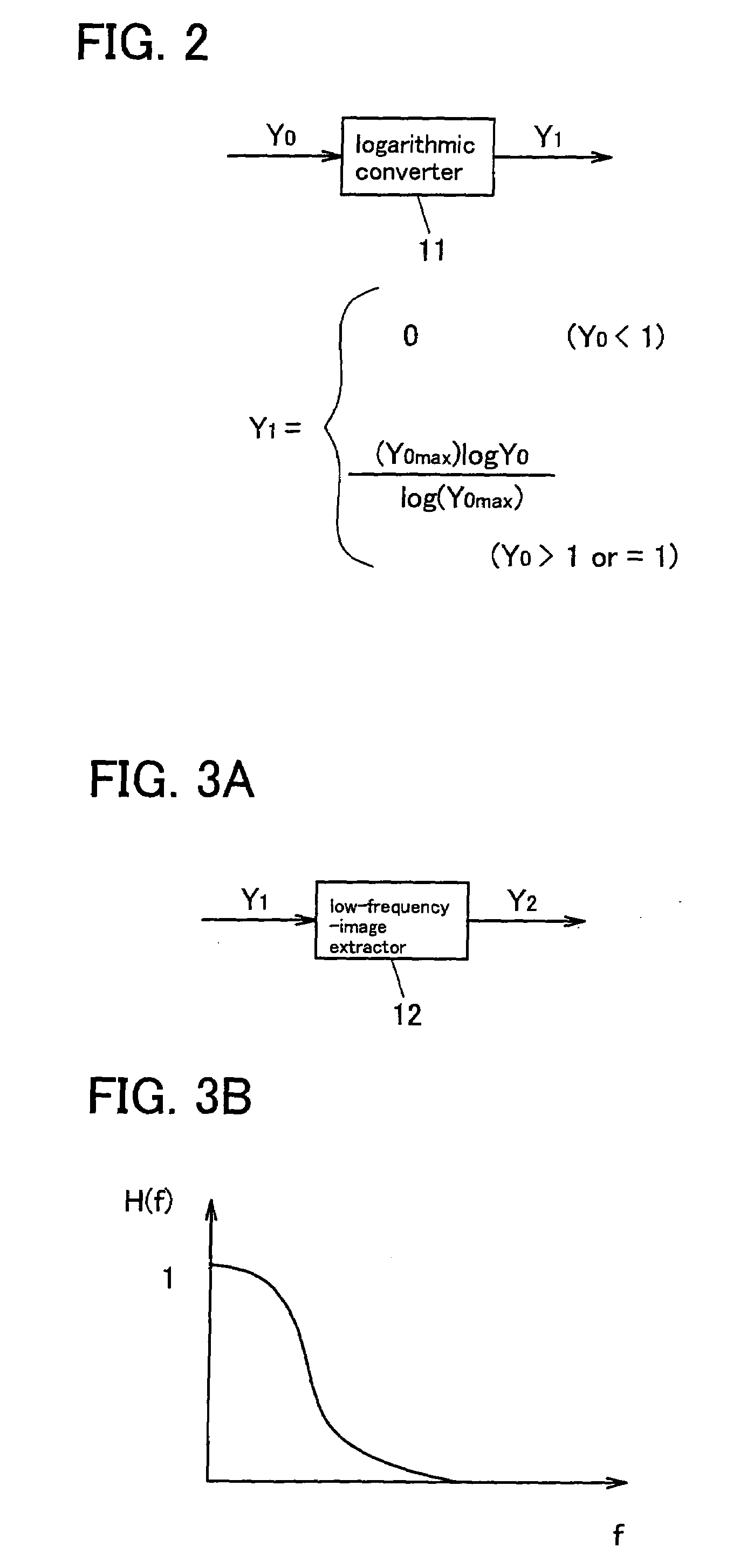Image processing method and apparatus
- Summary
- Abstract
- Description
- Claims
- Application Information
AI Technical Summary
Benefits of technology
Problems solved by technology
Method used
Image
Examples
first embodiment
[0081]FIG. 1 is a block diagram showing the configuration of an image conversion apparatus 10 according to a first embodiment of the present invention. The image conversion apparatus 10 includes a logarithmic converter 11, a low-frequency-image extractor 12, a delay circuit 16, a first lookup table 13-1, a second lookup table 13-2, and a linear computation unit 14. The low-frequency-image extractor 12 corresponds to the low-frequency-image extraction means; the first lookup table 13-1 and the second lookup table 13-2 correspond to the first and second coefficient determination means, respectively; and the linear computation unit 14 corresponds to the linear computation means. In the present embodiment, the inverse logarithmic conversion 93 shown in FIG. 18 is not used. The image conversion apparatus 10 of the present embodiment is of a high-speed type which performs frequency filtering on a line-by-line basis. Note that in the present embodiment, the constituent elements of the imag...
second embodiment
[0091]FIG. 6 is a block diagram showing the configuration of an image conversion apparatus 20 according to a second embodiment of the present invention. The image conversion apparatus 20 can be obtained by adding a gradation converter 15 to the image conversion apparatus 10 of the first embodiment. The gradation converter 15 performs gray-scale modification processing for luminance Y3 of the converted image, which is the output of the linear computation unit 14, to thereby obtain luminance Y4. The gradation converter 15 may be constituted by a lookup table.
[0092]The gray-scale modification performed by the gradation converter 15 will be described with reference to FIGS. 7 to 9C. FIG. 7 shows the manner of compression of the dynamic range of the low frequency component of luminance Y3 of the converted image, which is the output of the linear computation unit 14. Specifically, FIG. 7 is a graph showing the relation between luminance Y2 of the low frequency image and luminance Y3 of th...
third embodiment
[0095]The first embodiment can be modified to use the following as the coefficients C1 and C2, each of which is a function of luminance Y2 of the low frequency image.
[0096]Expression2:C1={g(T1-T0)(g-1)(Y2-T0)+T1-T0(Y2≤T1)1(Y2≥T1)C2={g(g-1)(Y2-T0)(g-1)(Y2-T0)+T1-T0(Y2≤T1)g-1(T1≤Y2≤T2)(1-g)(Y2max-Y2)γγ(Y2max-T2)γ-1Y2+(g-1){(γ-1)T2+Y2max}γY2(Y2≥T2)
[0097]In Expression 2, Y2max represents the maximum value that Y2 can assume, and γ represents a constant not less than 1. Expression 2 is formulated in such a manner that luminance Y3 is considered to be obtained by the expression Y3=C1Y1+C2Y2=C1(Y1+C2Y2 / C1) and that the derivative of C2 Y2 / C1 with respect to Y2 becomes continuous. When C1 is constant, the derivative of C2Y2 / C1 with respect to Y2 having had its sign inverted is the dynamic range compression ratio. Therefore, the dynamic range compression ratio for luminance Y2 can be changed continuously. In actuality, the coefficients C1 and C2 are continuous, and...
PUM
 Login to View More
Login to View More Abstract
Description
Claims
Application Information
 Login to View More
Login to View More - R&D
- Intellectual Property
- Life Sciences
- Materials
- Tech Scout
- Unparalleled Data Quality
- Higher Quality Content
- 60% Fewer Hallucinations
Browse by: Latest US Patents, China's latest patents, Technical Efficacy Thesaurus, Application Domain, Technology Topic, Popular Technical Reports.
© 2025 PatSnap. All rights reserved.Legal|Privacy policy|Modern Slavery Act Transparency Statement|Sitemap|About US| Contact US: help@patsnap.com



